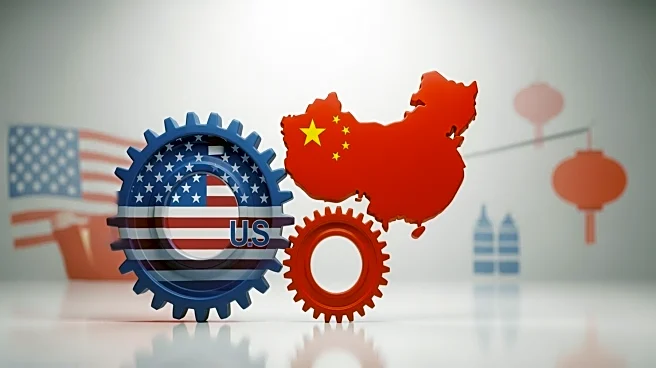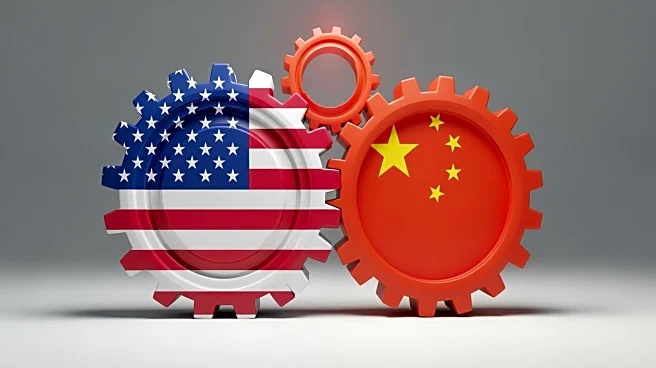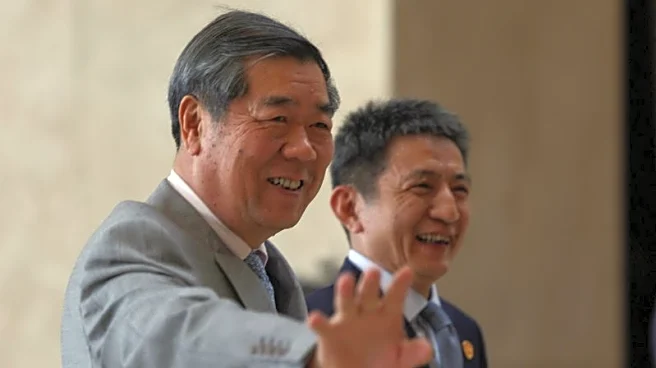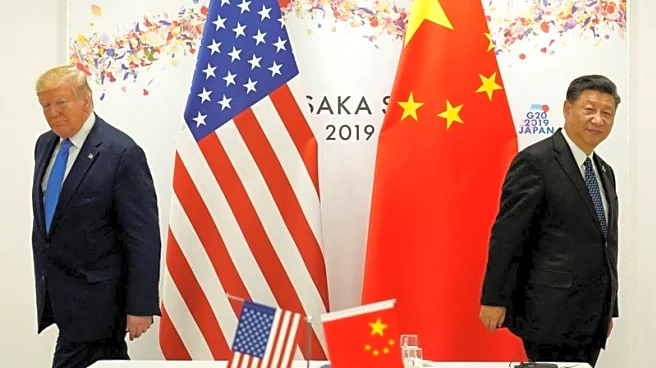What's Happening?
U.S. and Chinese officials have developed a preliminary framework for a trade deal that is set to be reviewed by President Trump and President Xi Jinping later this week. The discussions, held on the sidelines
of the ASEAN Summit in Kuala Lumpur, focused on pausing steeper American tariffs and Chinese rare earths export controls. U.S. Treasury Secretary Scott Bessent announced that the talks have eliminated the threat of Trump's 100% tariffs on Chinese imports, which were set to begin on November 1. Additionally, China is expected to delay its rare earth minerals licensing regime by a year. The framework aims to extend the tariff truce beyond its November 10 expiration date and revive substantial purchases of U.S. soybeans by China. The meeting between Trump and Xi is scheduled for Thursday during the Asia-Pacific Economic Cooperation summit in South Korea.
Why It's Important?
The preliminary trade deal framework is significant as it aims to ease tensions between the world's two largest economies, which have been strained by tariffs and export controls. The agreement could stabilize the global supply chain, particularly in the high-tech manufacturing sector that relies heavily on rare earth materials. U.S. soybean farmers stand to benefit from renewed Chinese purchases, potentially boosting the agricultural sector. The deal also addresses broader trade issues, including the U.S. fentanyl crisis and TikTok's ownership transfer. A successful agreement could pave the way for improved bilateral relations and economic cooperation, impacting global markets and international trade policies.
What's Next?
The next steps involve President Trump and President Xi Jinping reviewing and potentially signing off on the trade deal framework during their meeting in South Korea. Both countries will undergo internal approval processes to finalize the agreement. The outcome of the meeting could influence future trade negotiations and set a precedent for resolving other contentious issues, such as Taiwan and the detention of Hong Kong media tycoon Jimmy Lai. The U.S. may also seek China's assistance in dealing with Russia amid the ongoing conflict in Ukraine. The global community will be closely monitoring the developments, as they could have far-reaching implications for international trade and diplomatic relations.
Beyond the Headlines
The trade deal framework highlights the complex interplay between economic interests and geopolitical tensions. The discussions around rare earths underscore the strategic importance of these materials in modern technology and defense industries. The potential easing of trade restrictions could lead to a recalibration of global supply chains, affecting industries from electric vehicles to semiconductors. Additionally, the focus on TikTok and fentanyl reflects the broader challenges of regulating digital platforms and addressing public health crises. The agreement could also influence U.S.-China relations in other areas, such as climate change and cybersecurity, as both nations navigate their roles as global leaders.












